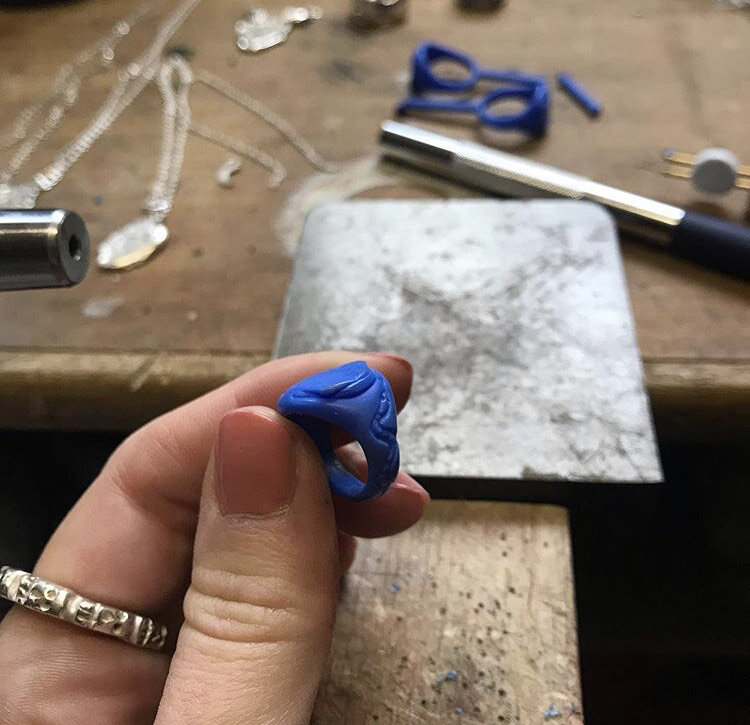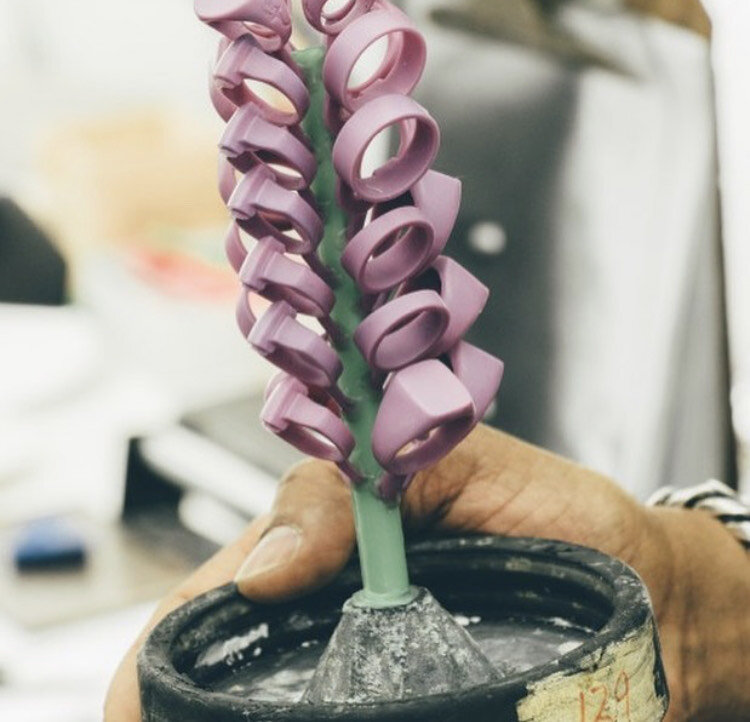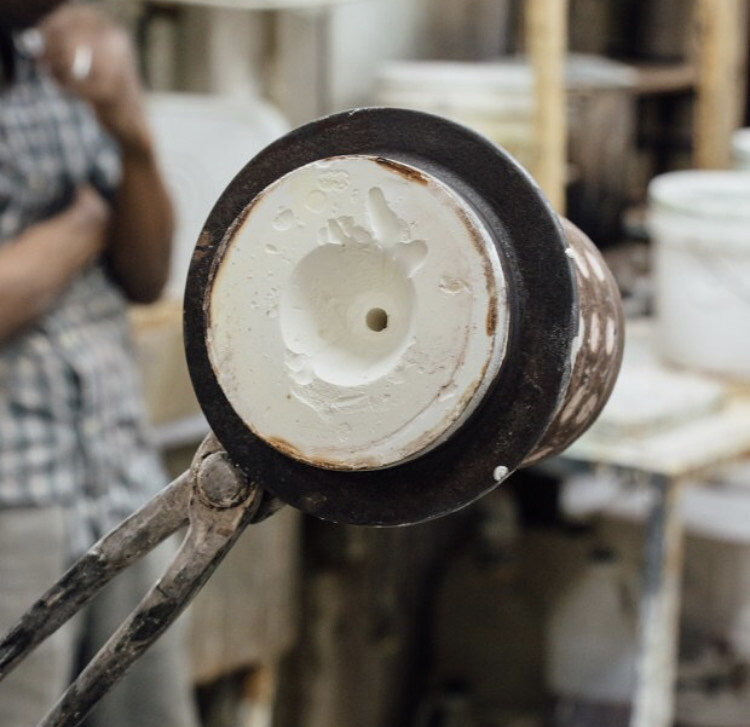L O S T // W A X // C A S T I N G
L O S T // W A X // C A S T I N G
The Lost Wax casting technique in jewellery making is a process that starts with a pattern that is carved or designed into wax, or a current piece of jewellery has a rubber mold made which can then be used to create a replica. The waxes are then attached to a wax tree by their sprus (small rod of wax) and melted away once plaster had been filled around it to be replaced with molten metal. This method is called lost wax casting because the wax is always “lost” during the process of making jewellery ⚒
.
Here’s the break down of how it works;
.
1. A huge amount of jewellery that is designed & created by hand starts off as a wax pattern. Jewellers & manufacturers will take the wax pattern and use plaster to create an “invested” mold.
.
2. Once the mold is created, jewellers or casting companies will put the mold into an oven until the plaster hardens.
.
3. In the oven, all of the wax will melt away and out of hollow cavity inside of the mold of waxes. (The cavity for the mold is created when setting up the wax pieces.)
.
4. With a wax-free mold, casters will then pour molten gold, silver or bronze into the hallow cavity that is in the mold with a vacuum machine or a centrifugal casting machine.
.
5. After a few minutes, the makers will place the mold carefully into a bucket of cold water and the mold will then dissipate. They will then be able to reach in and pull out the tree of metal that is the exact replica as the initial wax pattern. Or in the case of a bigger wax tree lots and lots of replicas of initial wax patterns!
.
6. These are then cut off the metal tree of replicas and finished & polished to then be sold or have stones set in their settings - most jewellers do this process themselves.




